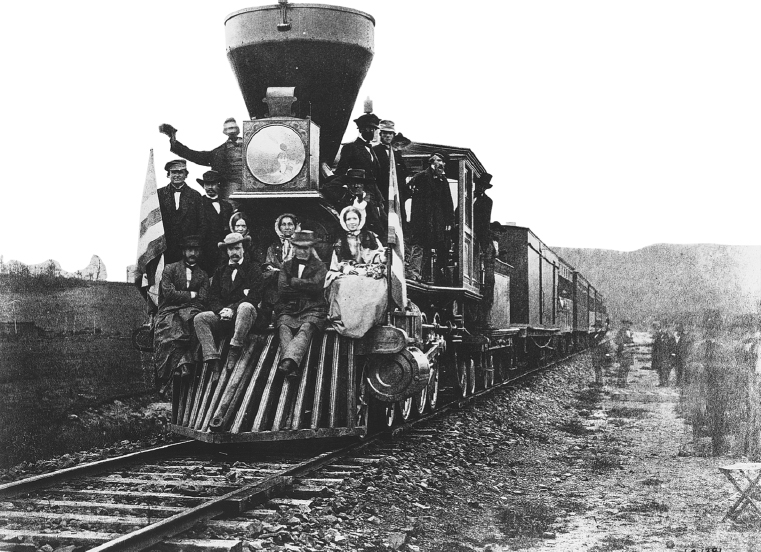How did the fight for land and resources in the West unfold?
Printed Page 506

CHRONOLOGY
1862
- – Homestead Act.
1869
- – First transcontinental railroad is completed.
1879
- – Exodusters move to Kansas.
1886–1887
- – Severe blizzards decimate cattle.
1889
- – Two million acres in Oklahoma are opened for settlement.
1893
- – Last land rush in Oklahoma Territory.
IN THE THREE DECADES following 1870, more land was settled than in all the previous history of the country. Americans by the hundreds of thousands packed up and moved west, goaded if not by the hope of striking gold, then by the promise of owning land to farm or ranch. The agrarian West shared with the mining West a persistent restlessness, an equally pervasive addiction to speculation, and a penchant for exploiting natural resources and labor.
Two factors stimulated the land rush in the trans-Mississippi West. The Homestead Act of 1862 promised 160 acres free to any citizen or prospective citizen, male or female, who settled on the land for five years. Even more important, transcontinental railroads opened up new areas and actively recruited settlers. After the completion of the first transcontinental railroad in 1869, homesteaders abandoned the covered wagon, and by the 1880s they could choose from four competing rail lines and make the trip west in a matter of days.
Although the country was rich in land and resources, not all who wanted to own land achieved their goal. During the transition from the family farm to large commercial farming, small farms and ranches gave way to vast spreads worked by migrant labor or paid farmworkers and cowhands. Just as industry corporatized and consolidated in the East, the period from 1870 to 1900 witnessed corporate consolidation in mining, ranching, and agriculture.
 An act that promised 160 acres in the trans-Mississippi West free to any citizen or prospective citizen who settled on the land for five years. The act spurred American settlement of the West. Altogether, nearly one-tenth of the United States was granted to settlers.
An act that promised 160 acres in the trans-Mississippi West free to any citizen or prospective citizen who settled on the land for five years. The act spurred American settlement of the West. Altogether, nearly one-tenth of the United States was granted to settlers.
 Railroad completed in 1869 that was the first to span the North American continent. Built in large part by Chinese laborers, this railroad and others opened access to new areas, fueled land speculation, and actively recruited settlers.
Railroad completed in 1869 that was the first to span the North American continent. Built in large part by Chinese laborers, this railroad and others opened access to new areas, fueled land speculation, and actively recruited settlers.
CHAPTER LOCATOR
What did U.S. expansion mean for Native Americans?
In what ways did different Indian groups defy and resist colonial rule?
How did mining shape American expansion?
How did the fight for land and resources in the West unfold?
Conclusion: How did the West set the tone for the Gilded Age?
 LearningCurve
LearningCurve
Check what you know.